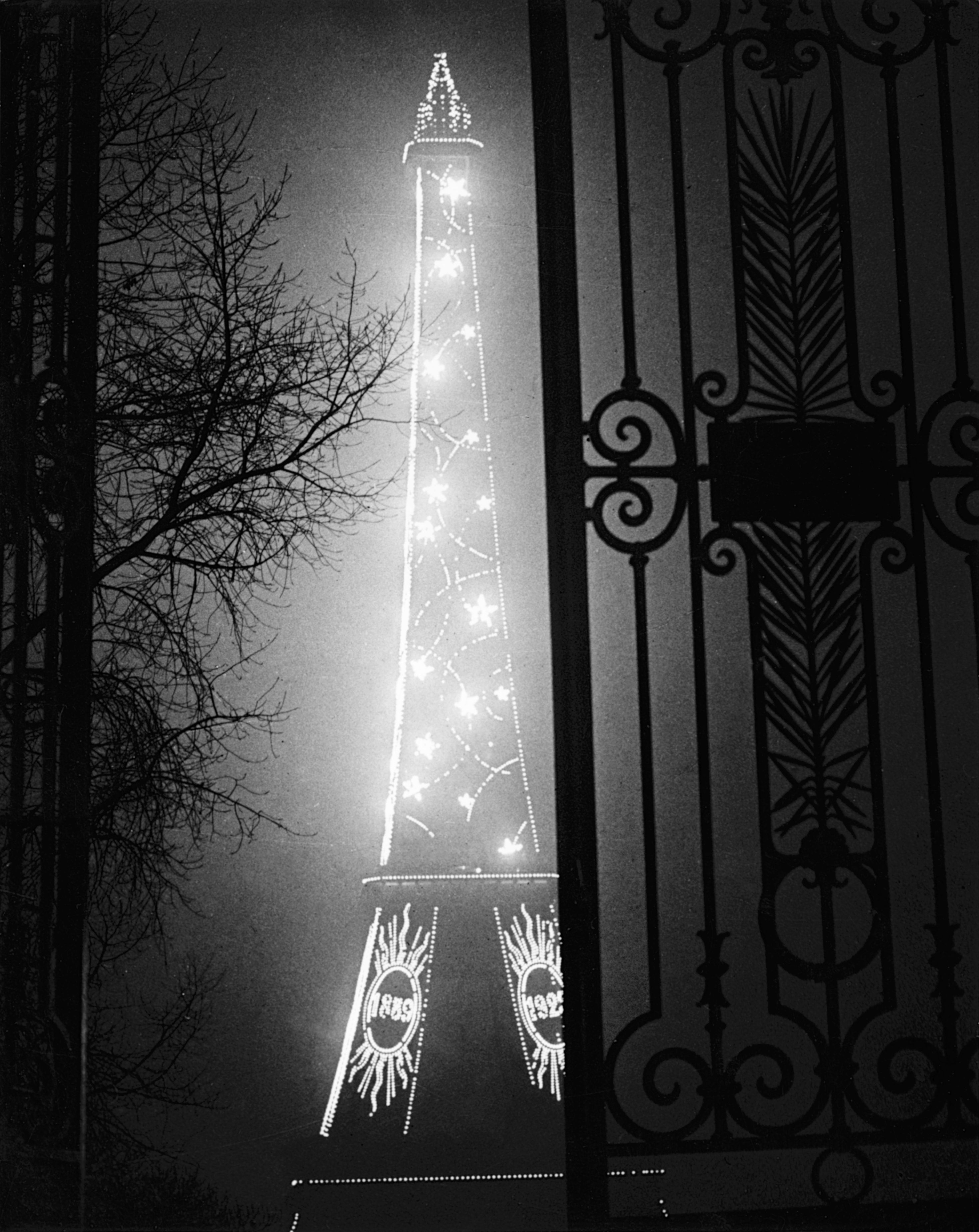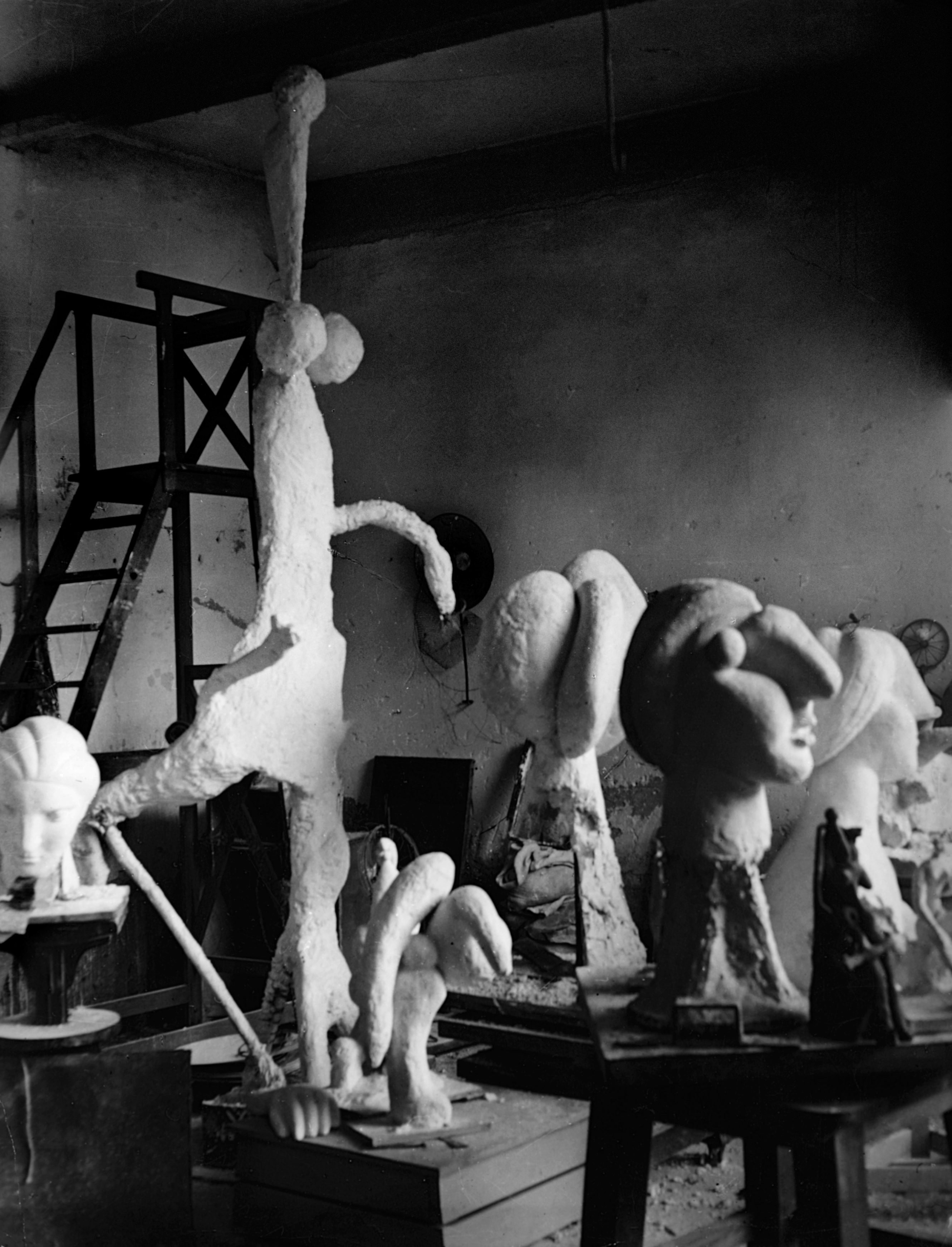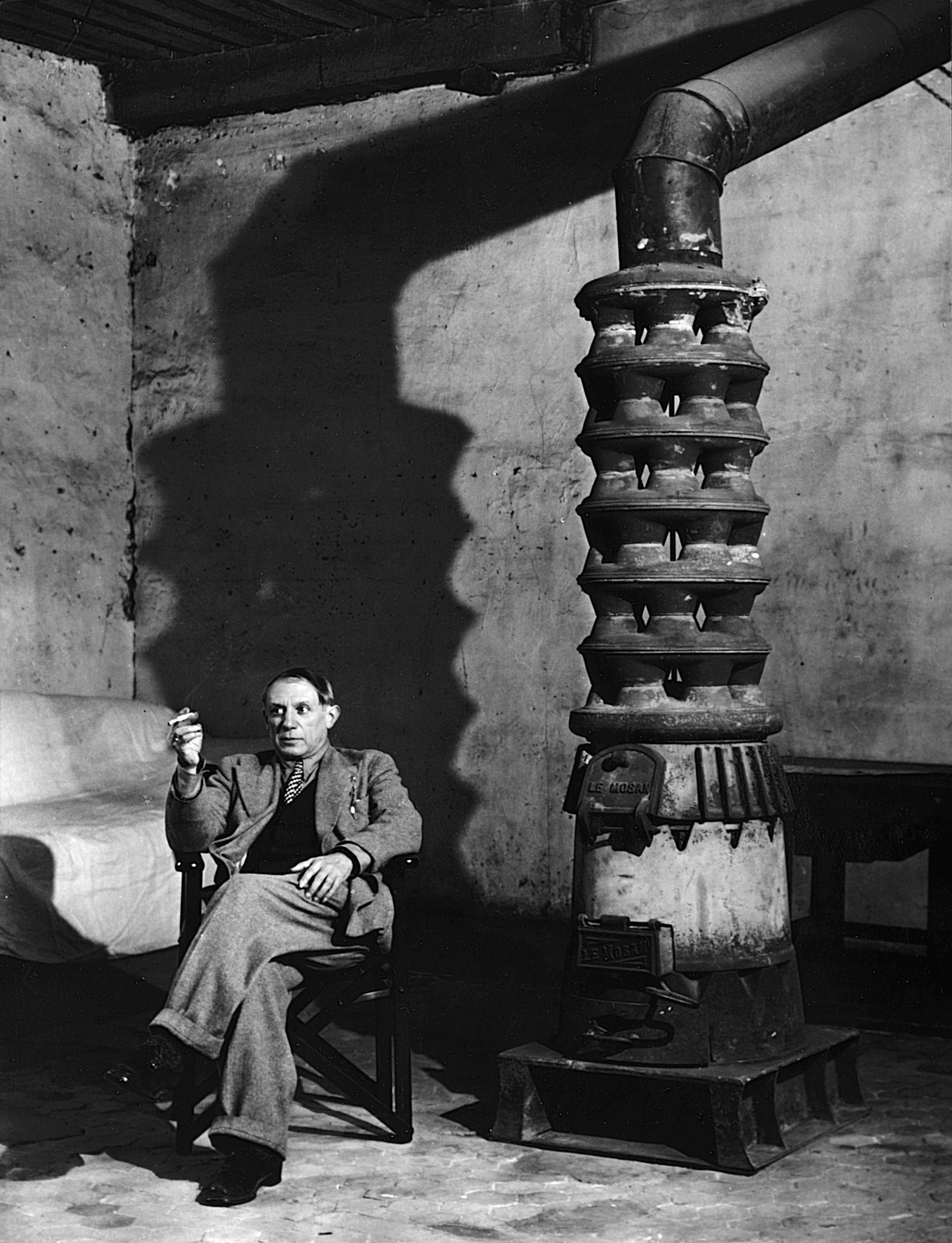
Brassaï and Picasso in Mougins, Notre-Dame-de-Vie, 1966 © Sucesión Pablo Picasso, VEGAP, Madrid, 2022
Picasso and Brassaï
The friendship between two foreigners in Paris
Photography has helped people get to know Picasso better, not only as a testimony of his life but also as a valuable source of information that sheds light on his personality, his work and the cultural environments in which he lived. Notable among the many ties he established in Paris with writers, essayists, playwrights and visual artists is his close and fruitful professional and personal relationship with the Hungarian-born photographer known as Brassaï.
Brassaï’s photographs of the 1930s have contributed to shaping the image we have of the French capital by evoking its artistic, social and intellectual scene. He X-rayed this great city, both by day and by night, from the underworld to the splendour of its social and artistic milieu. The Paris he captures shows the modern, cosmopolitan metropolis par excellence in a Europe marked by the major changes brought about by the industrial history of the nineteenth century. A city experienced and loved by him, and also by his colleague and friend Pablo Picasso.

The Eiffel Tower seen through the gate of the Trocadero, 1930-1932. Photography by Brassaï © Estate Brassaï Succession-Philippe Ribeyrolles
In December 1932 art critic Tériade invited Brassaï to photograph Picasso, his studio and his sculptures to illustrate the first issue of the legendary Surrealist publication Minotaure, a collaboration that led to a long and sincere friendship fuelled by mutual admiration. The photographer was fascinated by artist’s personality, and Picasso admired Brassaï’s unprejudiced gaze. They were two foreign friends in a big city: one went on to become one of the great photographers of the twentieth century, and the other the great artist who changed the history of art. They shared an extraordinary gift for observation and a keen curiosity. Both collected strange objects discarded and found by chance and had a notable interest in primitive art, the so-called art brut, bones, poetry and graffiti. They also had in common their refusal to focus on a single discipline in their desire to explore other creative fields.
This privileged relationship and the obvious rapport between the two men made the photographer an exceptional witness to Picasso’s intimate world: his places of creation, his works, his family environment and his friends. Brassaï was highly sensitive to detail; he knew how to bring order to disorder and lend his photographs a quasi-architectural structure, affording a new dimension to the works created by Picasso and to the objects and materials with which he surrounded himself.

Plaster sculptures in Pablo Picasso’s studio in Boisgeloup, December 1932. Photography by Brassaï © Estate Brassaï Succession-Philippe Ribeyrolles © Sucesión Pablo Picasso, VEGAP, Madrid, 2022
One of the most important written works for learning about Picasso is precisely a book by Brassaï: Conversations with Picasso (1964), a fascinating text that highlights the immediacy and attention to detail of a man who writes like a photograph. This chronicle, which Brassaï accompanies with more than fifty snapshots, begins in September 1943 – twelve years after he first met the painter – and ends in September 1962, providing a two-decade account of Picasso and a creative environment of which the Málaga-born painter was the epicentre. In addition, it tells of important episodes in the history of the art of the period and interesting events that took place during those years.

Pablo Picasso by the large stove in the studio on the rue des Grands-Augustins, September 1939. Photography by Brassaï © Estate Brassaï Succession-Philippe Ribeyrolles © Sucesión Pablo Picasso, VEGAP, Madrid, 2022